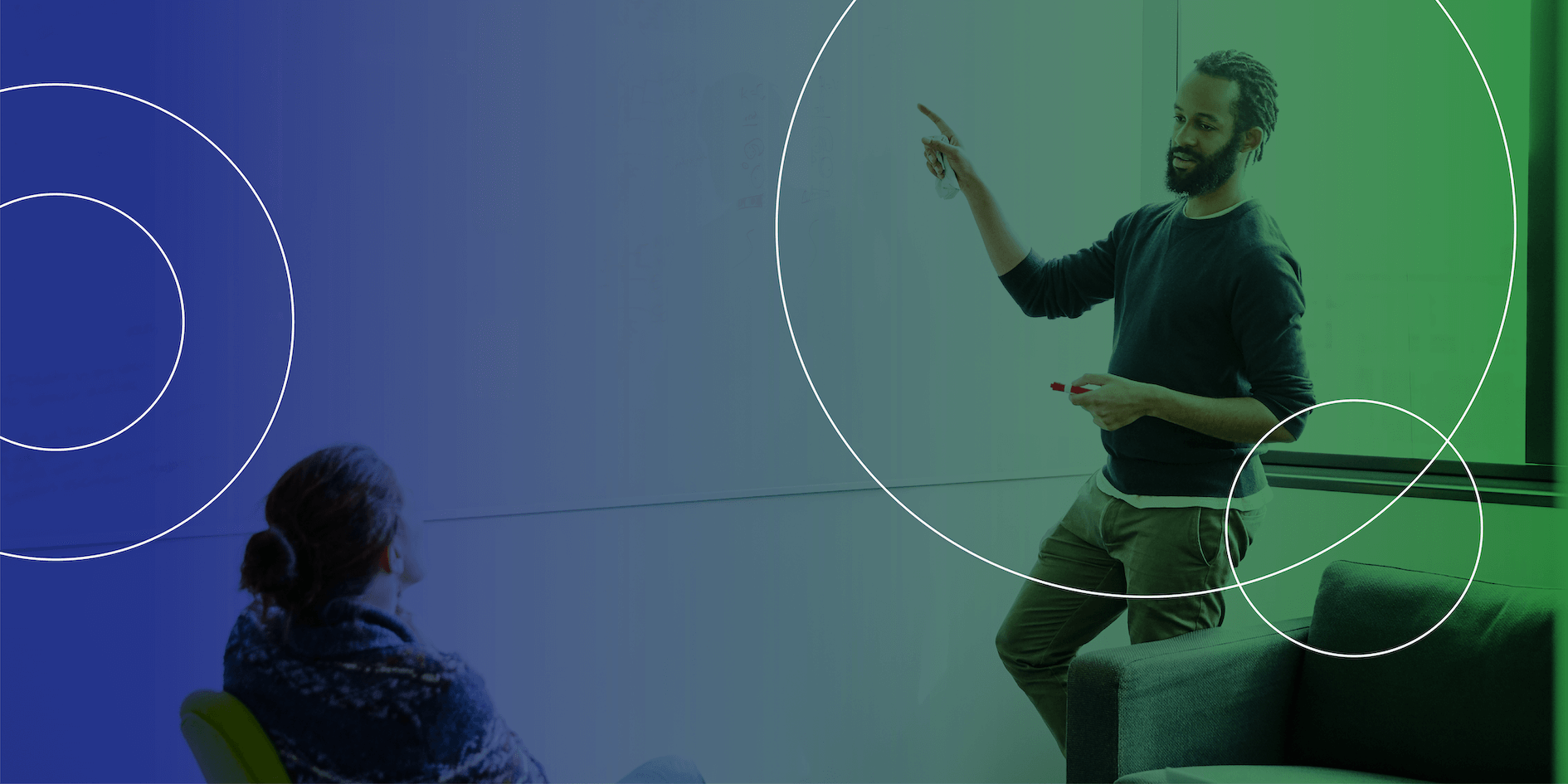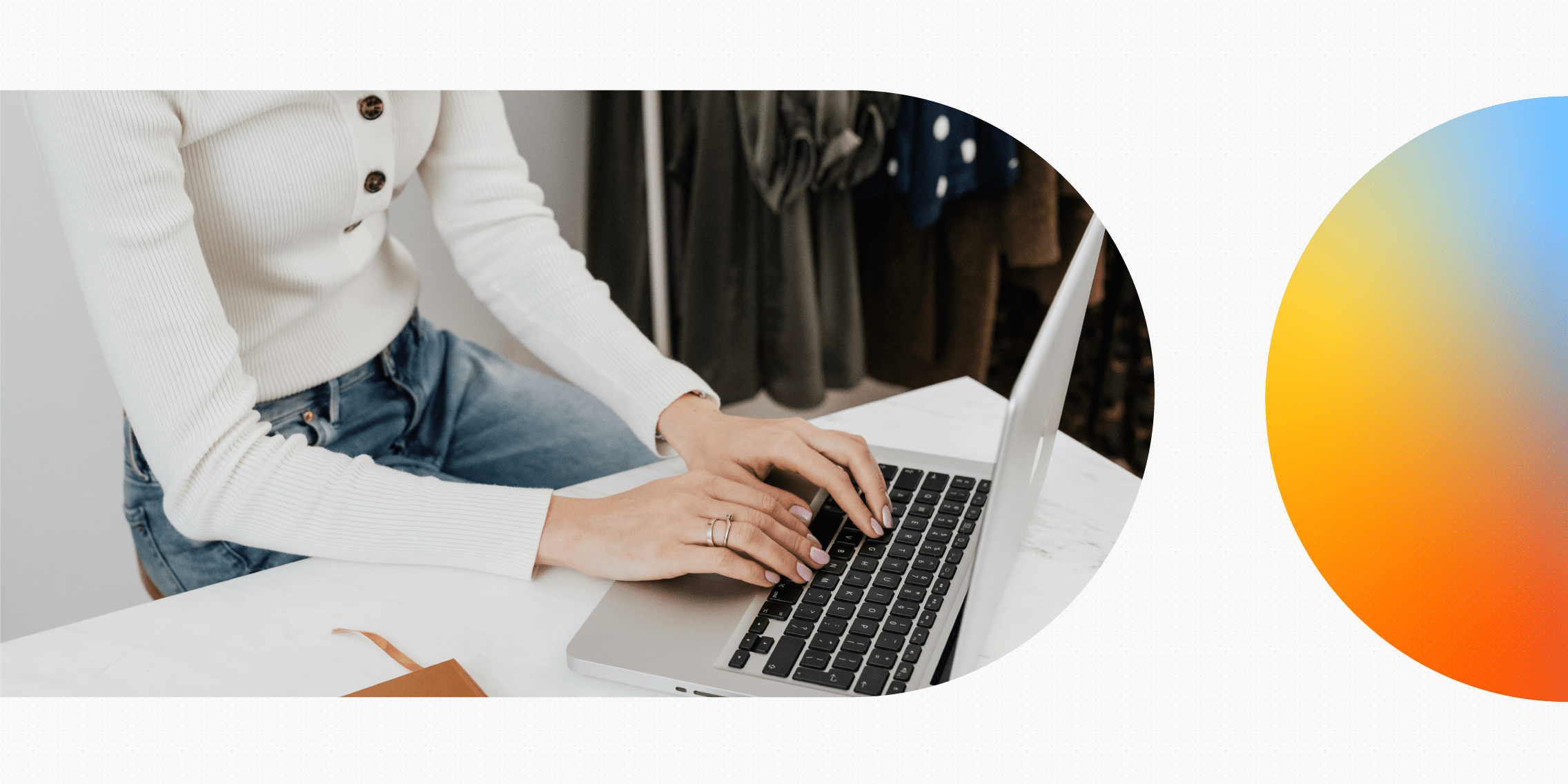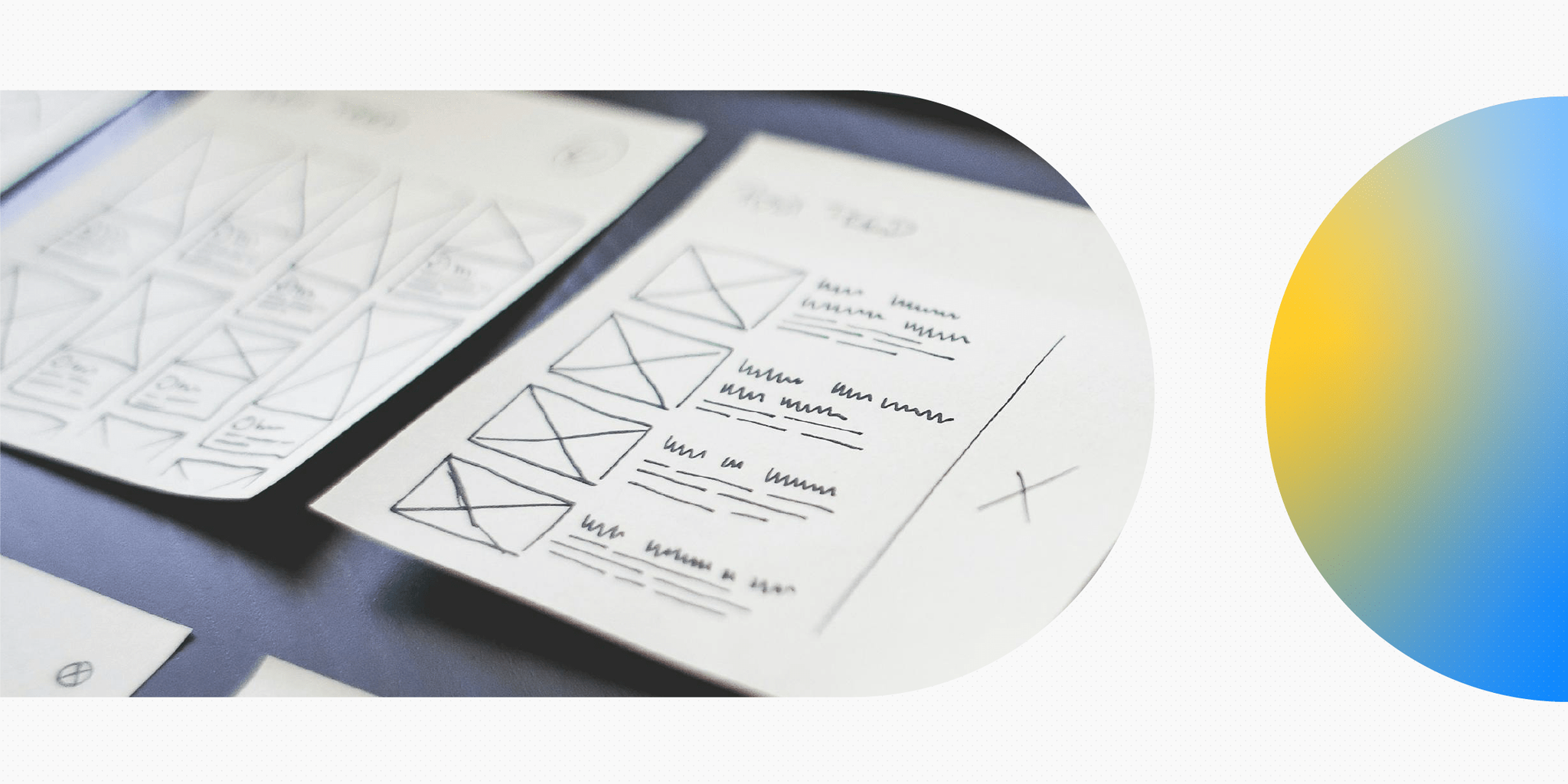Now that you’ve completed your studies in UX, you’re about to enter a new and somewhat daunting phase – the job hunt. No matter what industry you work in, the hiring process can feel like an overly long ordeal, with multiple interview rounds scheduled out over a few weeks for one role. When you come from a UX background, you’ve probably wondered if we can UX the hiring process for UX roles.
While this seems like a fresh idea, many places have already UXed their hiring process by using several stages that deal with different aspects for both the employers and potential employers.
The hiring process
Most UX hiring processes involve three rounds of interviews and each round is designed for a different purpose. The first one is to gauge if you are potentially a fit for the company, the second one includes a design task to test if you have the actual skill set and the third one is to verify if you will actually fit in with the company.
The quality of employees really affects a brand’s reputation so companies need to protect themselves by being vigilant during the hiring process. A lot of people hear tales of nine rounds of interviews, which are becoming more common for more senior design roles in larger companies like Amazon, Google, Meta and Microsoft.
Typically, you’re looking at a month-long hiring process and probably three rounds of interviews for a design role. Anything less than that would be for internship placements, as applicants aren’t expected to have that refined skillset.
This tried-and-tested format has stuck around for a reason, so when it comes to UXing the hiring process, it cannot be streamlined any more than it has been already. So let’s go to the very beginning of the job hunt to understand why the hiring process is the way it is.
Job application
When you upload your CV or resumé for a role, this is done through an Applicant Tracking System, which is used to screen unsuitable candidates out. At the very beginning, 75% of applicants will be screened out by the ATS based on a lack of key words and phrases matching the job description.
Manual screening is usually only carried out by very large organisations – or very small organisations that weren’t expecting a high volume of applicants. When you are applying for a role, assume that the company is using an ATS and make sure that your application matches what’s been asked of you in the job description.
Once your CV has been uploaded, the ATS will report back a percentage match for the job. If it’s under a certain amount, it will send an automatic rejection by default. It varies from role to role but if it’s above a 65% match, chances are you’re going to be handed to a recruitment agency for manual screening, which is usually done over the phone.
This screening call will last about 10 minutes and it verifies that you have relevant work experience or an educational background in UX. If they decide that you could be a likely match, you will be given an interview date and time.
The interviews
Once you’ve made it to the interview rounds, here is what you should expect (and what’s expected of you) as you progress through each stage.
Round one: Baseline experience
The first interview is an extensive but general introduction to you and your professional background. The interview panel will ask lots of questions about your experience in UX and your knowledge of it too. Questions you should prepare for include: do you understand the various different principles and stages of the UX process? Or what’s the value of UX?
There’s a chance that some companies will not have mature UX practices, so they won’t necessarily carry out an in-depth analysis on that. Instead, they will get a baseline of whether you might be a match for the company itself, before scheduling you in for the technical interview on a different date.
Round two: Technical interview
Generally, most people make it to the technical interview, unless it was very obvious that they were not right for the role in the first round. In this interview for a UX role, you will be expected to complete a design task. There are certain things that employers are looking for in that task that aren’t necessarily to do with the finished result of the task itself.
Obviously, the interview panel will need to see some decent quality work with impressive design elements but what they’re really examining is how you look at the problem, how you break it down, how you actively communicate it through the interview. They want to see that you are able to articulate the rationale behind your design decisions and to know if you are paying attention to the details they’ve included in the task.
Whiteboard challenge
These technical interviews are carried out in different ways. Sometimes they’ll do it as a whiteboard challenge in the interview. In this case, you’re given a design brief and the company intentionally leaves out some information in the hopes that you delve further to get more information or clarification. The interview panel might be in the same room as you but it’s not a case of them sitting there watching – they’re actually there to interact with you.
In these situations, active communication is encouraged. They won’t tell you this when you’re going in but it is what they’re looking for. The interview panel expects questions from you to clarify points as you go through the task. They want to understand what you’re doing, why you’re doing it and what the predicted impact would be.
Tasks in advance
Sometimes you’re given a design task about a week beforehand. You have that week to complete it and they expect usually about four hours of work to be put into it. When you’re doing a task like that, you will be provided with more information than you need. The reason for this is the interview panel wants to see whether you can actually pick up on the important details or not.
When you send on the completed task, you will be debriefed on it during the interview. Here you will need to explain your work in the same way you would a case study; what you did step-by-step, your rationale in choosing particular methodologies or design decisions, etc.
Challenges and feedback
In both of these design tasks, the most important factor is clear communication, explaining your process and explaining why you’re doing things. In the second half of the design task interview, they will ask questions and challenge you on different aspects.
The challenging isn’t necessarily because you made mistakes, it’s because they want to see your reaction to being challenged or how you handle feedback. They want to see whether you actually take feedback on board and consider whether it’s valid or not.
If their criticisms are valid, take that perspective into account, reassess some of your decisions and explain how you would actually work it out. If you feel like you’ve received unfair criticism, they would expect to see you back up why you did something and point out why their proposed strategy wouldn’t be a good fit.
The inbuilt challenges and repetitive questions are designed to test if you can back up your work or if you’re just making it all up on the spot. It also tests how you handle opposing ideas. It’s all designed to gauge if you are someone who will fit in with the team and work collaboratively. If you are quite resistant to feedback and really set in your ways, it will be a big red flag for potential employers.
Round three: Behavioural interview
The third round of interviews typically involves looking at behavioural questions, like what you would do or what you’ve done in certain circumstances. For example, if you’ve ever dealt with conflict with someone in your workplace – what was the nature of it and how did you resolve it?
With questions like that, one of the biggest things that really helps is to make sure you have thought through a few different circumstances of times you failed times, times you’ve succeeded, times you’ve had conflict.
With these questions, you should be utilising the STAR method in your answers. The STAR method is a structured repose that gives context to different situations. It helps you describe the situation, the task that you had to achieve, the actions you took to achieve them and then what the overall result of the situation was.
A lot of people panic when they’re asked about a time that they failed at something. Most people go in with the idea that this is a negative question, thinking that an example of when they messed up is going to be negative for them. The reality is, they’re looking for you to identify where something went wrong and what you could do to fix it in future situations. They want to see that you actively learn from your mistakes as it’s a strong sign that you’re a good hire.
If you are someone who just goes in pretending that you are completely competent in every single way, you’re not going to get that job. Everyone messes up – it’s okay to mess up and as long as you learn from that experience, that’s a really strong signal.
So if you UX that process, you actually lose those key exact discussion points in the various interview rounds. Basically, everything has been planned out already and it’s a process that has already been UXed.
Offer call
If you are successful in those three rounds of interviews, you will get a job offer, along with a call from the recruitment agency. The recruiter is usually the main point of contact for the candidate and they will talk through the offer. They will explain everything and if any negotiation has to happen, in regards to salary or holidays that the candidate has already booked.
This call hammers out the main details and, in most cases, people sign straightaway. Sometimes these negotiations can take a couple of weeks, depending on what you want out of it and what they’re willing to actually offer in terms of the basic pay plus the overall package.
What goes on behind the hiring process
There are parts of the hiring process that the candidate never sees. After your final interview, the interviewers have to make a decision on which candidates have actually done well and this will be put to a hiring committee. The hiring committee is usually made up of other members of the management’s team, maybe external stakeholders and someone from HR to review the interview performances from their own unique perspective.
In order to avoid bias or direct comparison, the hiring committee tries to look at four or five candidates at a time, rather than 20 in one go. The final decision can also be challenged by recruiters in the case of due diligence as they have a responsibility to make sure that the process is fair to the candidate. The hiring committee and the interviewers have a strict standard of what they’re looking for in a new hire and any deviation from that means that bias has entered the hiring process and that needs to be challenged.
Smaller companies don’t have that kind of oversight, whereas larger companies will have that built into their hiring timeline because they don’t want to mess around with potential litigation. This whole process is why the waiting period for hopeful candidates can last up to a few weeks.
Blind recruitment
One way of avoiding bias in the application process is through blind recruitment. Blind recruitment is the process of removing all and any identification documents or details so that a candidate’s job application is anonymised. This includes name, gender, home address, ethnic background, age, education, disability or personal interests. In some cases, some companies will insist on no identifying features at all and will use application numbers instead of names.
This process helps the hiring team evaluate candidates on their skills and experience instead of other factors that can lead to biassed decisions. Of course, once the interview rounds begin, some of these factors will be immediately clear but it makes sure that everyone has a fair chance at reaching a stage to actually be considered for the role.
Schools and universities normally have to stay on any application forms because certain qualifications need to be on there. While certain schools and colleges have better reputations than others for the quality of education, a lot of companies are beginning to realise that you can get high quality candidates that don’t even have a degree.
Google, Amazon or Meta have a lot of jobs that don’t require a degree as long as you’ve got a track record of experience that points to that skill set. This is where portfolios become crucial for UX designers.
Diversity, equity and inclusion
Unfortunately, it is impossible to completely remove bias from the hiring process but there are diversity, equity and inclusion (DEI) standards within most companies to prevent anyone from being disqualified unfairly as a candidate. It’s always a good idea to remove your address, date of birth, gender and anything that identifies you on your job application so that you make it to the interview rounds.
Separately, when you are offered a job, an anonymous diversity form is usually sent to you from HR. This is used to ensure the workplace has the right environment, culture and support for people, no matter what their gender, class, ethnicity, disability, age and sexual orientation is.
Some of the larger companies will do multiple interview stages. Google’s hiring process, for example, takes three months, which seems like a long time. It’s a very thorough process that includes background checks on every hire.
Bigger companies will often take this route because while a candidate might look good on paper or perform reasonably well in the interviews, once they join the office environment, they could be a mismatch.
Can we UX the hiring process for UX roles?
This may not be the answer you want to hear but no, the UX hiring process cannot be UXed any more than it has been already. Although it may seem tedious – especially when you are freshly qualified and excited to start working – but the process has to be thorough for both the company and you.
As much as they are interviewing you to see if you are a right fit, with carefully placed tasks and questions designed to get you out of your comfort zone, this is a chance to see if they’re a right fit for you.




